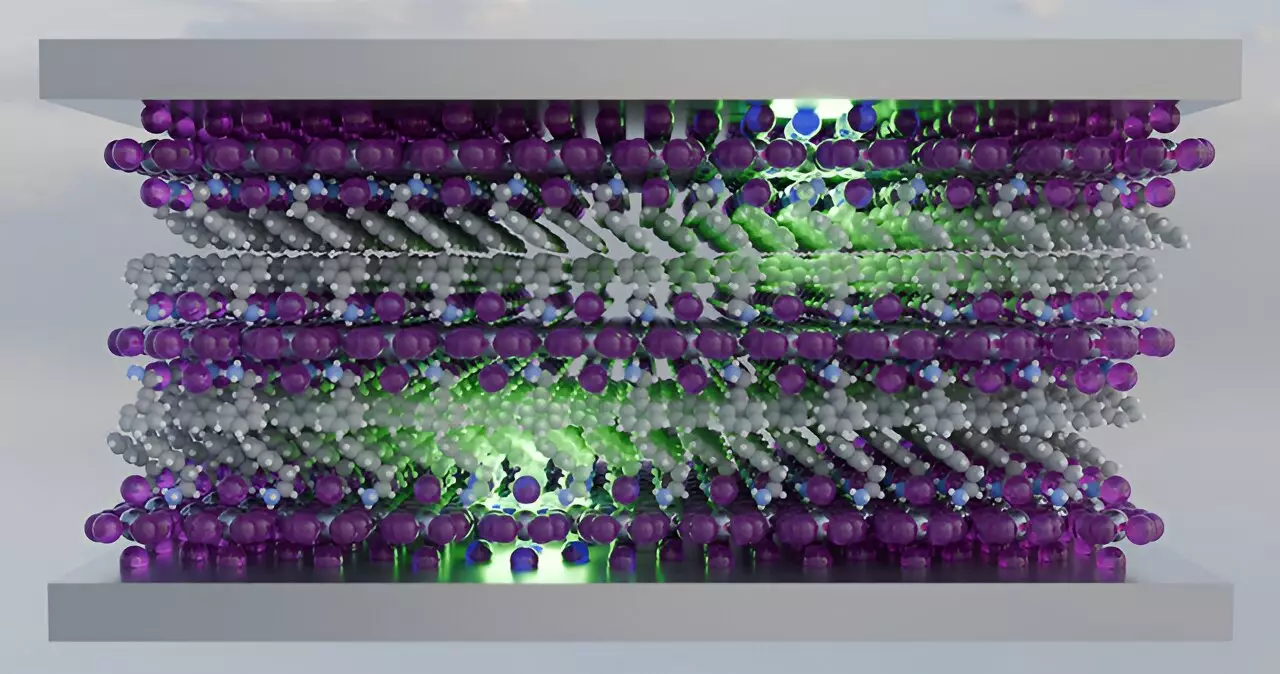In the world of solar cells and light-emitting diodes, the kinetics of excited states of molecules play a crucial role in determining the overall efficiency of the devices. Exciton-exciton annihilation is a major loss mechanism that can significantly impact the energy output of these systems. Researchers from the National Renewable Energy Laboratory (NREL) and the University of Colorado Boulder have been exploring ways to control this process by coupling excitons with cavity polaritons. Their findings, detailed in a recent article in the Journal of Physical Chemistry Letters, shed light on how manipulating the interaction between photons and electronic states can lead to more efficient optoelectronic devices.
Exciton-exciton annihilation refers to the process where excitons, which are bound electron-hole pairs, collide and annihilate each other, resulting in energy loss. This phenomenon is particularly detrimental in high-efficiency systems like solar cells and LEDs, where every bit of energy counts. By controlling the amount of exciton-exciton annihilation, researchers hope to improve the overall efficiency of these devices.
The key to controlling exciton-exciton annihilation lies in coupling excitons with cavity polaritons. Cavity polaritons are hybrid states of light and matter that occur when the energy exchange between photons and electronic states surpasses their decay rates. By confining the excitons within a cavity formed by two mirrors, researchers were able to manipulate the interaction between photons and excitons, leading to a significant reduction in energy loss.
Using transient absorption spectroscopy, the researchers demonstrated how varying the separation between the mirrors in the cavity containing the 2D perovskite layer could influence the exciton-exciton annihilation process. The perovskite material, (PEA)2PbI4 (PEPI), showed promising results in terms of controlling the loss mechanism. The stronger the coupling between the perovskite layer and the cavity, the longer the excited state lifetime, thereby reducing the annihilation process by an order of magnitude.
The implications of these findings are significant for the future development of optoelectronic devices. By harnessing the power of strong coupling effects, researchers can potentially increase the efficiency of LEDs and solar cells by minimizing energy losses due to exciton-exciton annihilation. The ability to tune the coupling strength offers a new avenue for controlling the dynamics of excited states in these systems, paving the way for more efficient and sustainable energy technologies.
The research conducted by the NREL and University of Colorado Boulder teams highlights the importance of understanding and controlling exciton-exciton annihilation in optoelectronic devices. By exploring the interaction between excitons and cavity polaritons, researchers have made significant strides towards improving the efficiency of solar cells and LEDs. The study opens up new possibilities for enhancing the performance of future energy technologies through innovative approaches to manipulating excited state kinetics.


Leave a Reply
You must be logged in to post a comment.